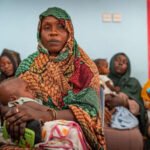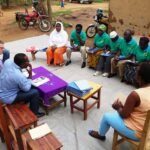The International Rescue Committee (IRC) has called on donor countries to reboot the global response to extreme hunger as catastrophic consequences of the recurrent drought in Kenya continue to get worse.
Development Diaries reports that the humanitarian organisation made the call warning of impending crisis if immediate actions are not taken.
According to the IRC, about 5.4 million people are projected to face high levels of acute food insecurity between March and June this year.
This latest projection highlights a 43 percent increase in people facing high levels of food insecurity compared to the same period in 2022.
Kenya is battling with severe drought conditions following three straight seasons of failed rains.
Although needs are growing, the drought response plans in Kenya still remain underfunded, which significantly restricts the ability of humanitarian organisations to act.
‘Weather forecasts suggest a reasonable chance that the upcoming March to May rains will again underperform’, IRC Kenya Country Director, Mohamed El Montassir, said in a statement.
‘Should this happen, it would be an unprecedented sixth poor season, with catastrophic humanitarian impacts.
‘About 970,000 children aged six to 59 months and 142,000 pregnant or lactating mothers in Kenya will likely suffer from acute malnutrition over the course of 2023 and are in need of treatment.
‘This state of malnutrition among these vulnerable populations has compromised their immunity and increased their risk of exposure to disease.
‘More than 2.4 million livestock, which pastoralist families rely upon for nourishment and livelihood, have died.
‘Desperate and unhealthy coping mechanisms have been adopted by most families to deal with the atrocities of the drought.
‘The drought has further heightened the risk of gender-based violence hampering children’s access to education’.
IRC called for the revitalisation of the High-Level Task Force on Preventing Famine to close the treatment gap for acutely malnourished children by adopting a simplified, combined protocol for treatment.
Source: IRC
Photo source: Alabama Extension






